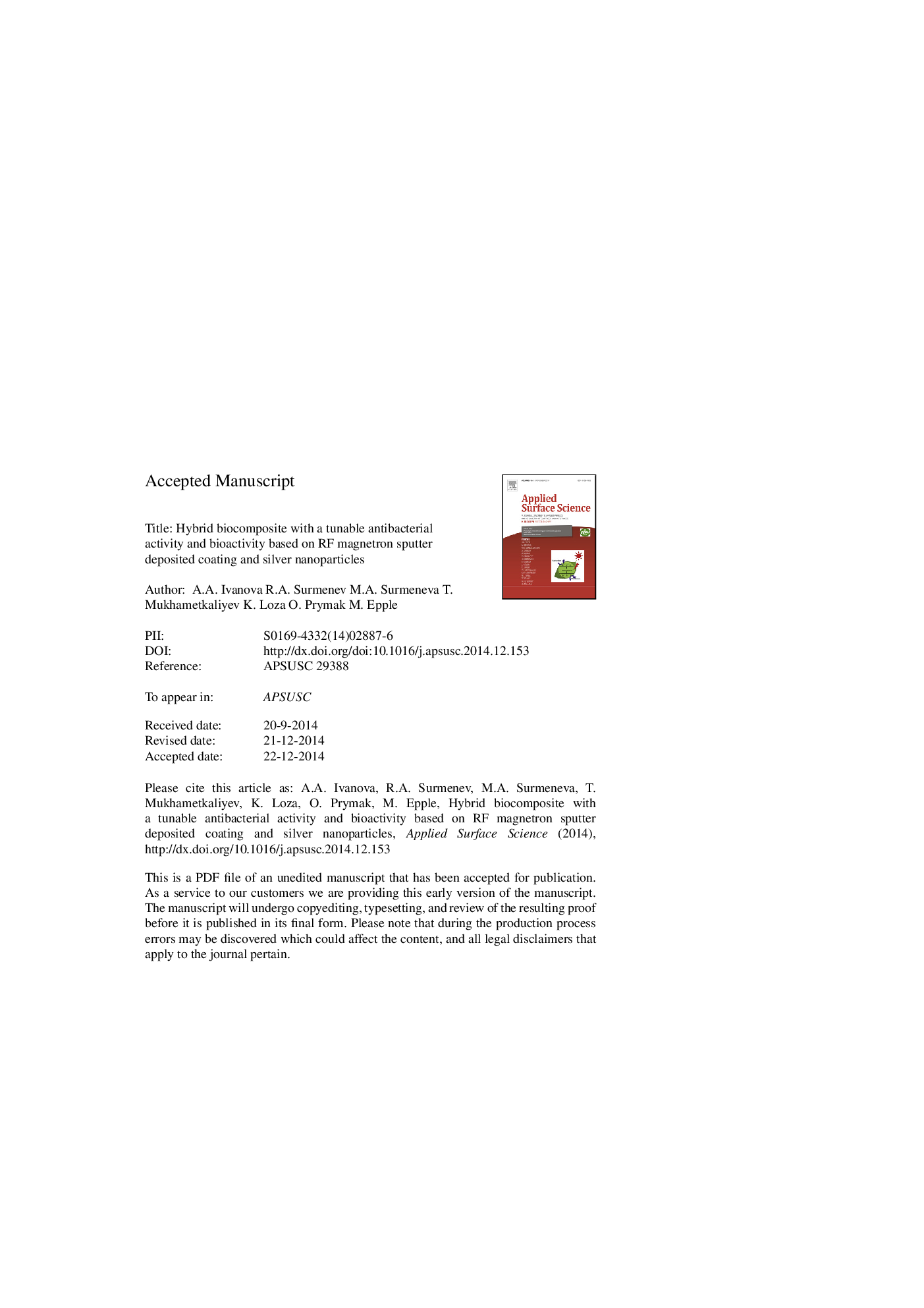| Article ID | Journal | Published Year | Pages | File Type |
|---|---|---|---|---|
| 5359624 | Applied Surface Science | 2015 | 28 Pages |
Abstract
In this work, we describe fabrication techniques used to prepare a multifunctional biocomposite based on a hydroxyapatite (HA) coating and silver nanoparticles (AgNPs). AgNPs synthesized by a wet chemical reduction method were deposited on Ti substrates using a dripping/drying method followed by deposition of calcium phosphate (CaP) coating via radio-frequency (RF) magnetron sputter-deposition. The negatively charged silver nanoparticles (zeta potential â21 mV) have a spherical shape with a metallic core diameter of 50 ± 20 nm. The HA coating was deposited as a dense nanocrystalline film over a surface of AgNPs. The RF-magnetron sputter deposition of HA films on the AgNPs layer did not affect the initial content of AgNPs on the substrate surface as well as NPs size and shape. SEM cross-sectional images taken using the backscattering mode revealed a homogeneous layer of AgNPs under the CaP layer. The diffraction patterns from the coatings revealed reflexes of crystalline HA and silver. The concentration of Ag ions released from the biocomposites after 7 days of immersion in phosphate and acetate buffers was estimated. The obtained results revealed that the amount of silver in the solutions was 0.27 ± 0.02 μg mLâ1 and 0.54 ± 0.02 μg mLâ1 for the phosphate and acetate buffers, respectively, which corresponded well with the minimum inhibitory concentration range known for silver ions in literature. Thus, this work establishes a new route to prepare a biocompatible layer using embedded AgNPs to achieve a local antibacterial effect.
Related Topics
Physical Sciences and Engineering
Chemistry
Physical and Theoretical Chemistry
Authors
A.A. Ivanova, R.A. Surmenev, M.A. Surmeneva, T. Mukhametkaliyev, K. Loza, O. Prymak, M. Epple,
